Yollar qattiqidagi bitta zanjir davrasli tizimlar: Yangi modda?
Har qandaydir Wout van Aert 2023-yilda Champs-Élysées-da bitta-zanjir-davrasli Cervélo bisikletini yuqoriga oshirib, ikkinchi Tour de France g'olib chiqishini bayrob ketdi, lekin ushbu konfiguratsiya har kim uchun ham qulay emas, shunchaki professional sargarmoq majburiyati bilan tezlanayotgan sirlash uchun emas.
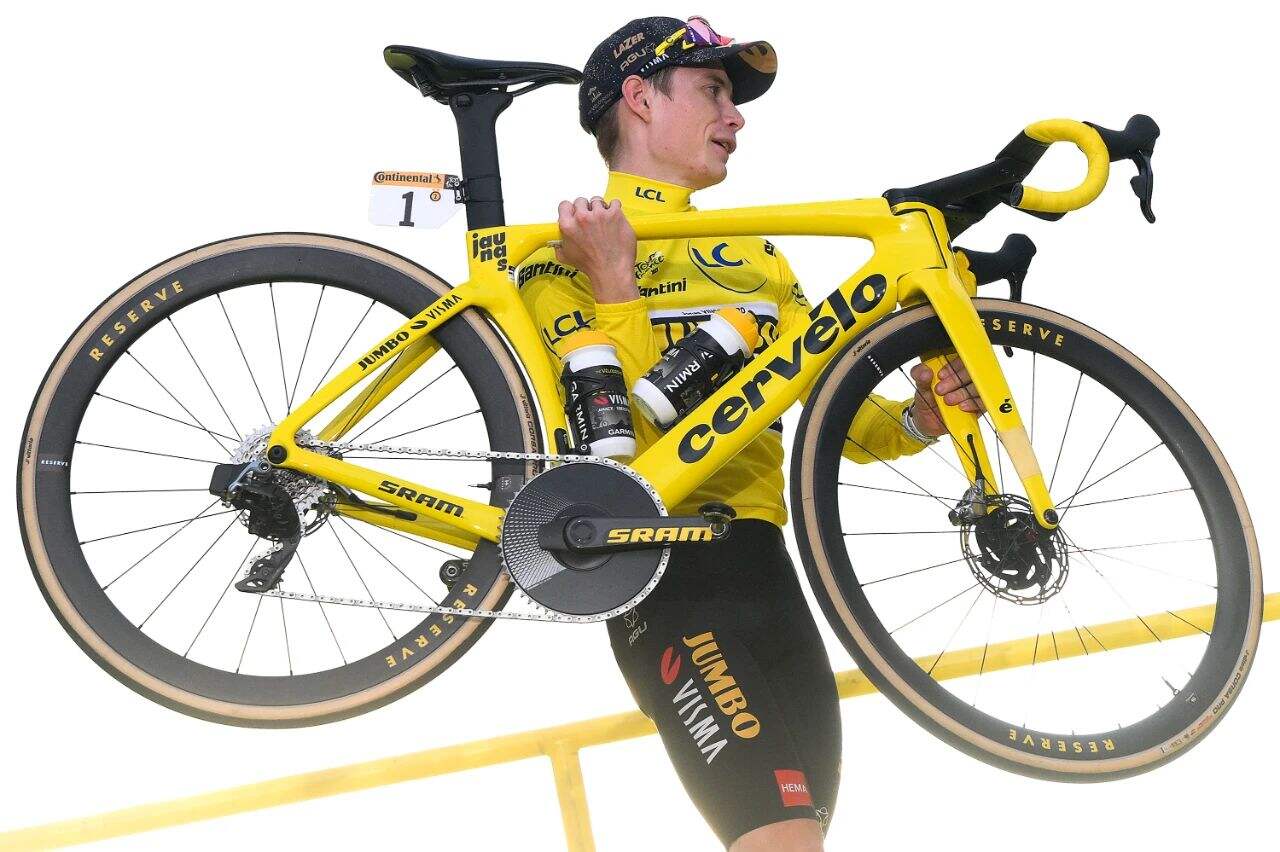
Bu yilning Bahor Klassiklari bir necha jamoa va bisikletchilarining bitta-zanjir-davrasli tizimlarga o'tishini ko'rsatdi, bu esa yollar bisikletida bitta-zanjir-davrasli transmissiyalarining foydasi haqida yangi munosabatni yoqtirdi.
Va bitta-zanjir-davrasli tizimlar maxsus holatlarda foydasi bor va yangi hub gear texnologiyasi o'yinni ozgartiruvchi bo'lishi mumkin, lekin yollar bisikletida bitta-zanjir-davrasli revolyutsiya hali chaqindoq.
Mening fikrimcha, hozirgi vaqtning oldindagi derailleurs juda yaxshi va ko'pchilikda ularni berishdan keladigan foydalar manfaatlarni oshirmaydi.
Yagona chainring tizimi dorib chashmasida qanday holatlarda maqul bo'ladi?
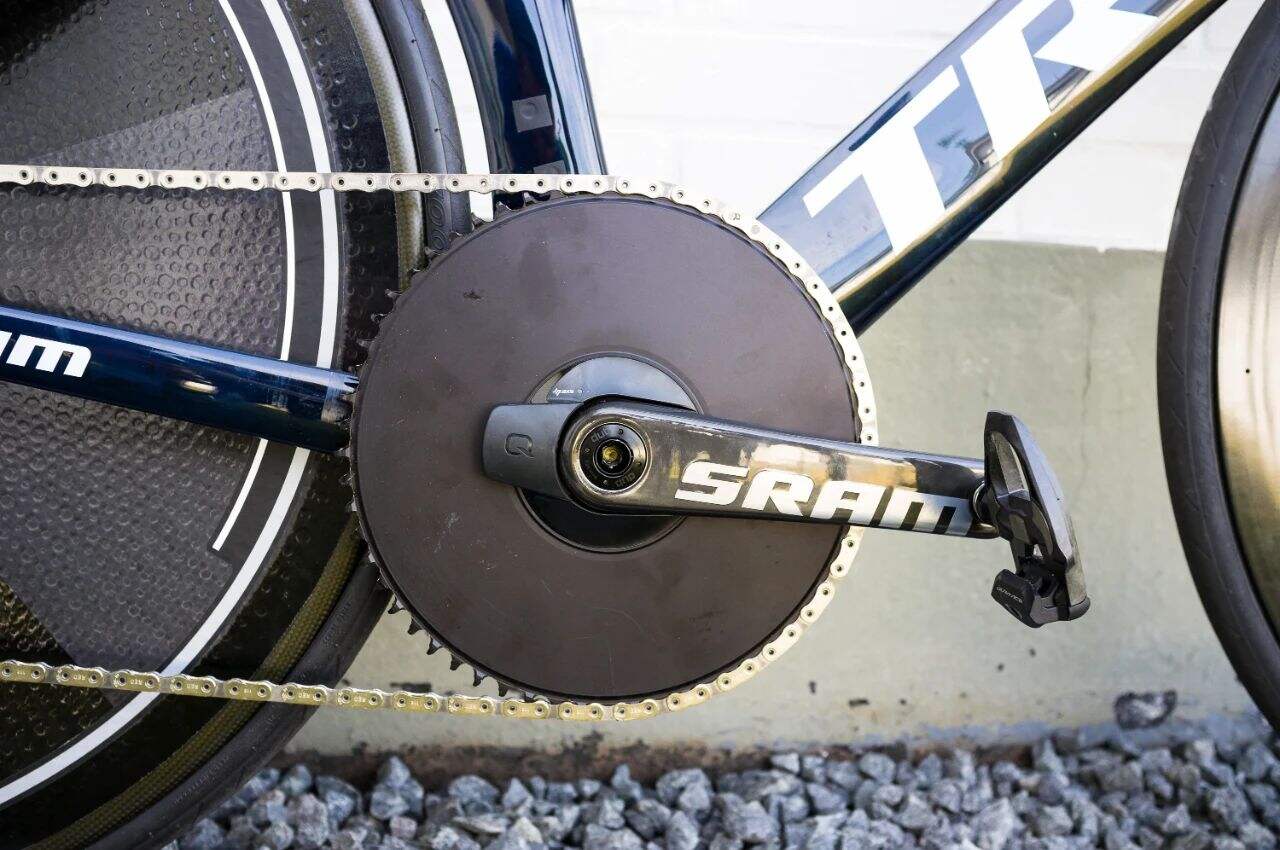
1x aero chainsets time trial dorib chashmalari uchun keng tarqalgan bo'lib ketmoqda.
Dorib chashmasida yagona chainring tizimiga doir bir nechta foydalar (va kamchiliklar) mavjud.
Keng tarqalgan tezisli darajalar kerak bo'lmagan holatlarda, masalan, nisbiy ravishda tenglikli yo'llarda yoki sirtlarida, yagona chainring tizimi sizga barcha kerakli darajalarni taqdim etishi bilan birga narsalarni oddiy qiladi.
Yagona chainring tizimi aero dinamik jihatdan ham effektivroq bo'lishi mumkin. AeroCoach UK ekspertlariga ko'ra, ularning ARC 1x aero chainringiga o'tish "oldindagi derailleurni olib tashlashingizdan asbobo, 30mph / 48kph tezlikda 1 dan 4 wattgacha energiya taqdirlantiradi.
Bu kichik foyda, ammo vaqtincha time trial va dorib chashma velosipedlari shundan foydalanmoqda.
Zanjir saqlagichidan foydalanish (zanjirning zanjir charkasidan pastga tushishi oldini oladi) aerodinamik yutuqlarga tabiiy ravishda ta'sir qiladi.
Ammo, 2x konfiguratsiyasi bilan solishtirganda, ushbu konfiguratsiya zanjirni ko'proq xavfsizlik ta'minlaydi, bu Paris-Roubaix kabi sarg'onda muhim bo'lishi mumkin.
Masalan, Wout van Aert 2023-yilda Milan-San Remo va Paris-Roubaix da 1x SRAM Red eTap AXS tizimidan foydalandi, shu maxsus sababga qarab.
Konfiguratsiya asosida, bitta zanjir charkalig'i tizimi og'irlikiga nisbatan eng kam bo'lishi mumkin. Masalan, ajratilgan sur'atli yetish uchun ishlatiladigan velosipedlar hamma holatlarda bitta zanjir charkasidan foydalanadi.
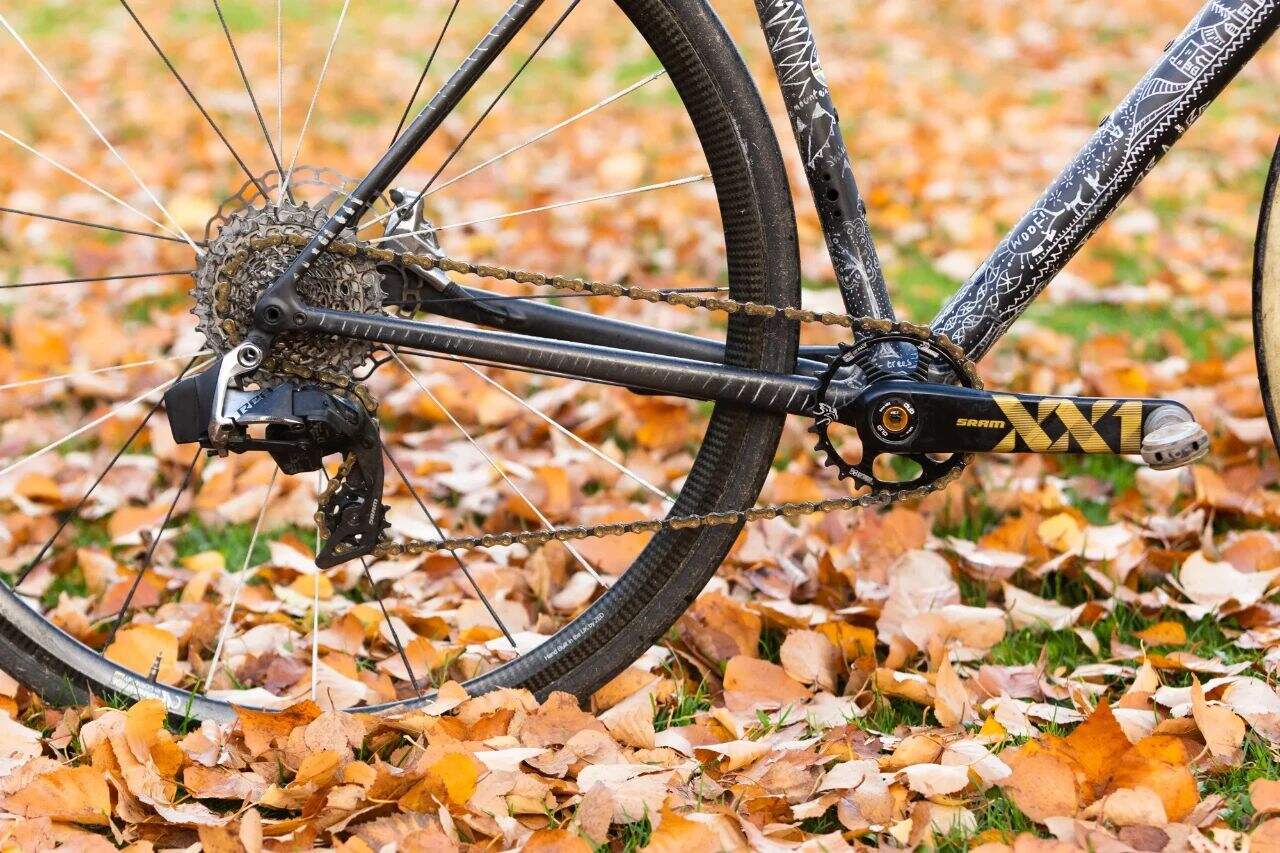
Sur'atli yetish uchun ishlatiladigan velosipedlar oddiyroq va ikkita zanjir charkasiga ehtiyoj bo'lmaganligi sababli har doim bitta zanjir charkasidan iborat transmissiya bilan sozlandiriladi.
Yo'liq velosipedlarda bitta zanjir charkasidan foydalanishning kamchiliklari
Shuningdek, yo'liq velosipedlarda bitta zanjir charkasidan foydalanish tizimi bir necha holatlarda imkoniyatlari bor, lekin uning ham kamchiliklari mavjud.
Eng ochincha bo'lganini bir qator sifatida oldi vaqtga qarab, uning oldi vaqtdagi front derailleur va chainringlardan qochish sizga velosipeddagi tezliklar soniga va tezliklarning diapazoniga ko'p xil farqlar keltiradi.
Ushbu muammo keng diapazonli orqa cassette bilan va har bir yurganligi uchun chainring hajmini aniq moslashtirish orqali hal qilinishi mumkin. Ammo, 1x konfiguratsiyada 2x tizimiga yaqin bo'lgan tezlik diapazonini ta'minlashda ba'zi kompromislar talab etiladi.
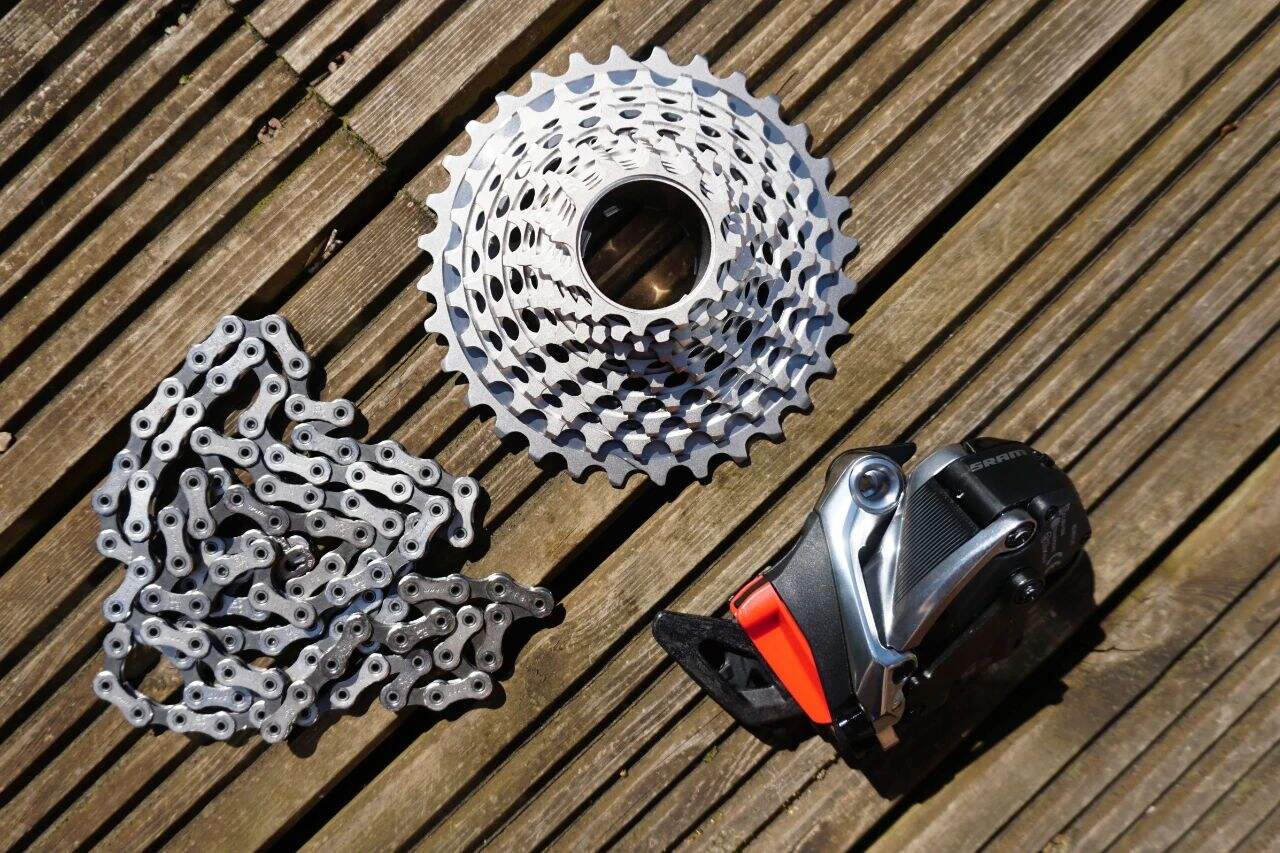
2x transmissiya bilan ishlatiladigan keng yo'qli cassettelar optimal cadence ni topishda kattaroq eslaydi.
Birinchi, keng diapazonli cassettelar (agar siz 2x tizimga o'xshash tezlik diapazonini saqlamoqchibolsangiz) ko'p darajali cassettelardan og'ironroq bo'ladi.
Ko'proq muammoli narsa shundaki, ular ko'p darajali "cog jump"ni ko'rsatadi, bu esa o'tkazmalarni yaxshi emas his qilishga olib keladi.
Bu jihatdan juda noqulay bo'lishi mumkin, chunki yo'l pastlag'i off-road holatlardan kam osonroq bo'ladi va tezliklar orasidagi katta farqlar ba'zi holatlarda optimal tezlik va cadence ni topish qiyinchilikka olib kelishi mumkin.
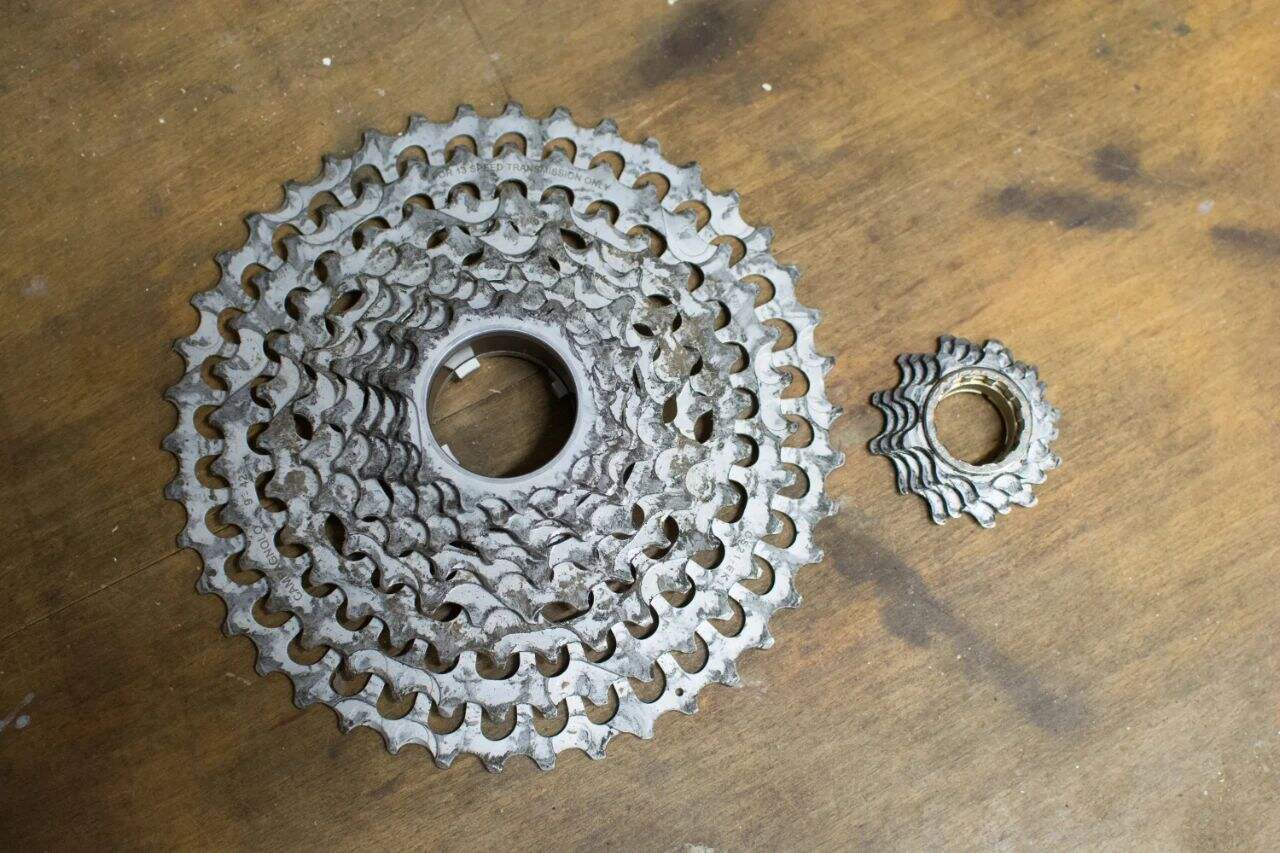
1x transmissiyalar uchun keng oqimli kasetlar, masalan Campagnolo Ekar 9-42t, e'tibor qarashni xizmat qiladigan tezina oralig'ini taklif etadi, lekin ular ham kompromislar bilan keladi.
Kichik diamentlar, masalan SRAM AXS yoki Campagnolo Ekar kassetlari dagi 10t yoki 9t va taniqlar ham eng kamida bir necha darajada kam effektiv bo'ladi (chunki qator katta diamentlardan nisbatan to'g'ri bunga qarama-qarshi unday o'qish kerak).
SRAM shunday qilib "cross-chaining" emasligini ta'kidlay oladi, lekin 1x transmissiya hali qattiq bunga qaraganda ikki tomonidan ham kasseta oxirgi qismiga qatorni ko'proq ekstrem bunga joylashtiradi.
Ushbu ikki omil ham transmissiya ichidagi sur'shilikni oshirishi mumkin, bu esa (barcha boshqa shartlar teng bo'lganda) 1x transmissiya qaraganda 2x transmissiyadan kamroq quvvatni moykaqa yetkazadi.
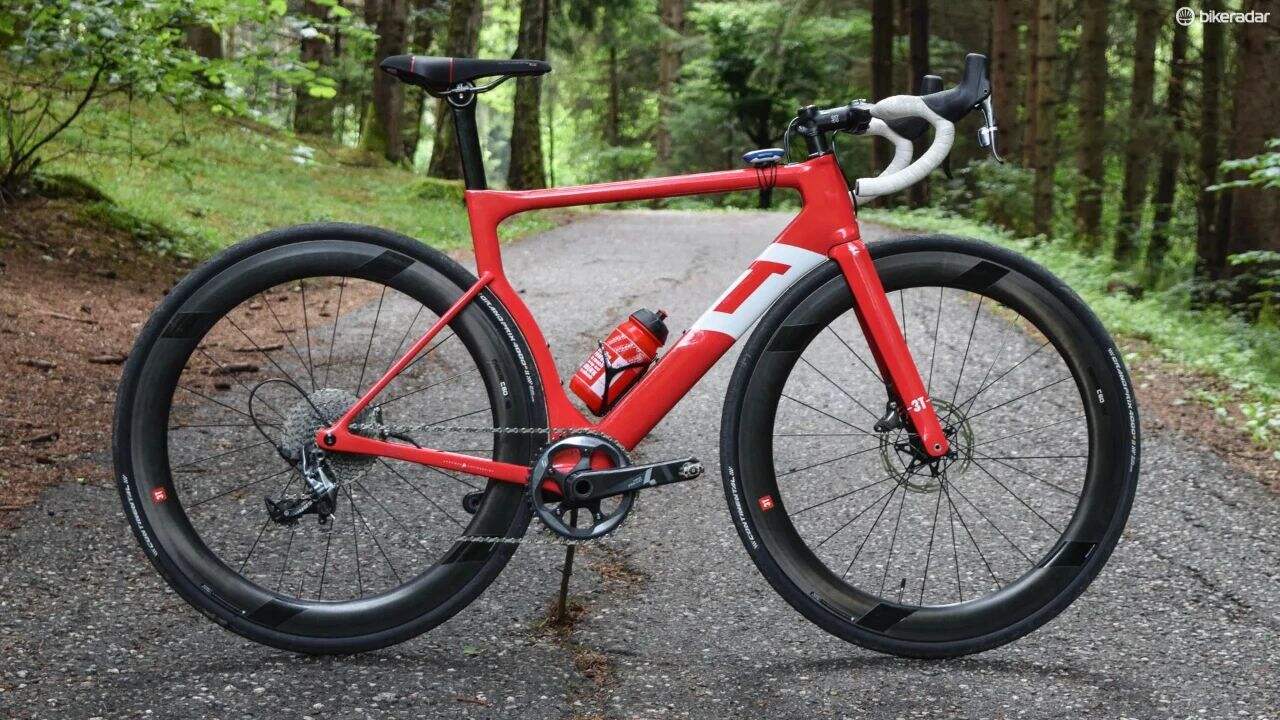
Avvalgi 3T Strada 1x transmissiyasi ko'proq aerodinamik bo'lishi mumkin, lekin u kamroq effektiv bo'lishi mumkin.
Demak, effektivlikda necha darajali kamochilik haqida gapirib turganmiz? 2019-yilning may oyi davomida VeloNews va CeramicSpeed 1X va 2X transmissiya sistemalari orasidagi friktson farqlarini sinab ko'rdi. Ularning sinov protsoli va natijalariga bir qaraylik, so'ngra men ushbu friktson kamochiklari sizning tezligingizga qanday ta'sir qilsa hisoblayman.
-
Testlash
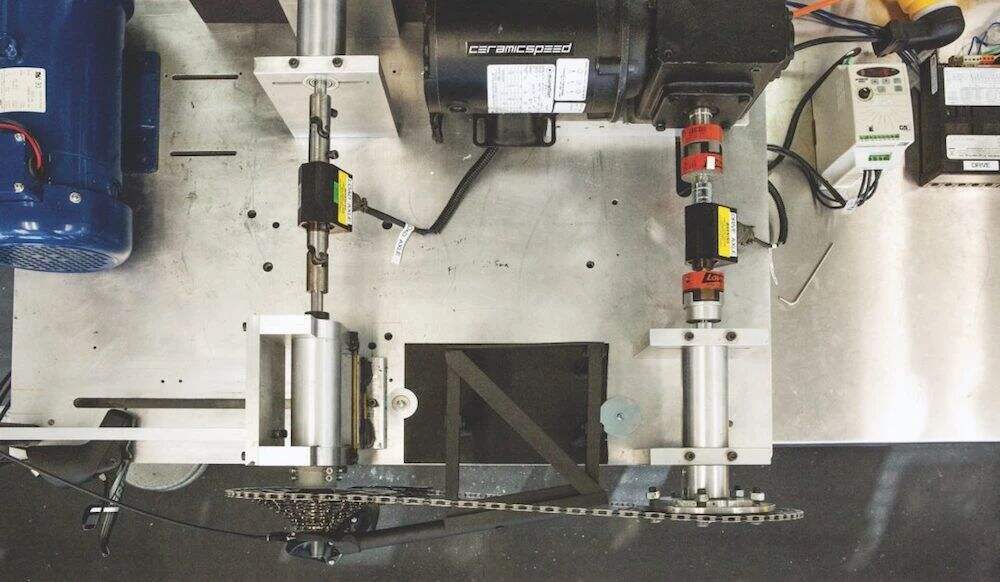
VeloNews/CeramicSpeed ikki turli transmissiya qurilmalarini sinab ko'rdi:
- 1X sistema: SRAM Force 1 orqa pererga, 48t zanjir charkasi, PC-1170 zanjir va 10-42t kasseta ishlatildi.
- 2X sistema: Shimano Ultegra orqa pererga, 53/39t zanjir charkalari, HG701 zanjir va 11-34t kasseta ishlatildi.
Ushbu sistemalarni tanlagan sababi ularning gear diapazonining bir xil bo'lishi, bunda bir xil gear nisbatlarida friktson kamochiklarini to'g'ri solishtirish imkoniyati beradi. Ikki sistemada ham har bir gear kombinatsiyasidagi friktson kamochiklarini hisoblash uchun sinov velosipedi o'rnatildi. Sinov apparati 95RPM-da pedal urishi va 250 vatt quvvat hosil qilishni simulirovdi.
Zanjir qatorini moslashtirish: 1X tizimi shunday o'rnatilgan bo'lib, eng kichik zargardagi 5-ch darajada to'g'ri qator (chainline) hosil bo'ladi, xolos 2X tizimida esa 53t zargarda 5-ch darajada va 39t zargarda 8-ch darajada to'g'ri qator bo'lardi.
CeramicSpeed shuningdek, fabrikadan kelgan masalarni olib tashlab, ikkita qatorlarni bir xil gipsov masal bilan qayta masaladi. Bo
har qator bir xil davom etgan sinovga tushdi.
Eslatma: CeramicSpeed oldinidan topgan ma'lumotlar asosida, 1X zargar foydalanilganda friktsiya 2X to'g'ri bosqichli zargarlarga nisbatan ko'pay olmaydi. Shu jumladan, orqa degenerning yordamchi doiralarining (jockey wheels) friktsiyaga ta'siri yo'q edi.
Natijalar
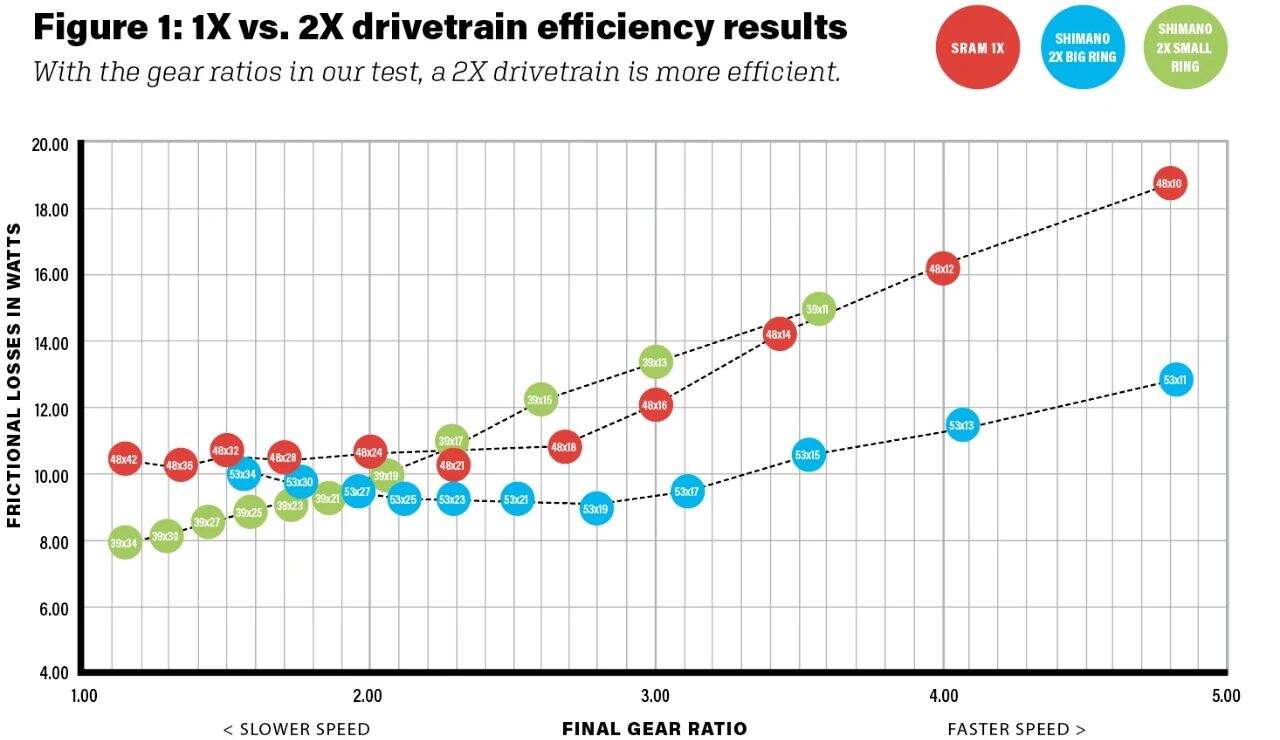
Sinovdan keyingi muhim natijalar quyidagilar:
- Friktsiya yo'qotklari umuman olganda daraja nisbatiga mos ravishda oshib boradi.
- 2X tizimi har bir darajada (39x21t dan keyin katta zargariga o'tilsa) effektivroq edi.
- Friktsiya yo'qotkisi farqi 1 vattdan (48x21t / 53x23t) 6 vattgacha (48x10 / 53x11) o'zgaradi.
- 1X tizimi to'g'ri qator holatida (48x18t) 2X tizimidan (53x19t) ko'ra ko'proq friktsiya yo'qotkasi bilan keladi.
- 1X tizimining effektivligi 96.0% dan 92.4% gacha o‘zgarib, orta arifmetik qiymati esa 95.1% bo‘ldi.
- 2X tizimining effektivligi 96.8% dan 94.8% gacha o‘zgarib, orta arifmetik qiymati esa 96.2% bo‘ldi.
CeramicSpeed 1X tizimining o‘rtacha sikl fraktsiyasi 12.24 vattdir. Bu, 11 darajali orqali har bir darajadagi qurollar uchun qator yo‘qligi miqdorlarini qo‘shish va 11 ga bo‘lish orqali aniqlandi. 2X tizimi uchun natija 9.45 vatt bo‘ldi, bu esa ikki tizim orasidagi o‘rtacha farqni 3 vattdan pastda saqladi.
-
Nega 1X 2X dan kam effektiv?
Siklda to‘qilishning tortta asosiy manbasi mavjud. Eng ochiq shakli - siklning bog‘langan burchagi, bu sikl yuza va kasetni yopishiga sabab bo‘lib, bunday holatda ko‘proq to‘qilish hosil bo‘ladi. Siklning bosimsizligi, uning havoslarining articulyatsiyasi va sikl tezligi ham muhim rollarni o‘ynaydi.
Kattalik qo'shmasi kattalikning markaziy qattiq va kaseta orasidagi bosimni oshiradi. Kichik markaziy qattiqlar va yorug'liklar ishlatilganda, kattalik qo'shmasi ko'taradi. Kattalik articulyatsiyasi kattalikning pinlari orqali burilishi darajasiga nisbatan aytiladi, va u kichik yorug'liklarni o'tkazishda eng yaqin friktsonga olib keladi. Kattalik tezligi har bir daqiqada markaziy qattiq va yorug'liklar kattalik bilan etkilaishi tezligiga nisbatan aytiladi. U kichik yorug'liklarni o'tkazishda ko'taradi.
Umuman olganda, 1X tizimi markaziy qattiqlari diapazonida to'liq to'g'ri kattalik chizig'ini saqlab bo'lmaydi, va kichik markaziy qattiqlar kattalik qo'shmasini, kattalik havosalaridagi ko'proq articulyatsiyani va kichik yorug'liklarda kattalik tezligini oshiradi.
Bu qo'shimcha omillar, hatto to'g'ri turdagi zanjir chizig'ining bo'lishi bilan ham, 1X tizimi 2X tizimdan 2 vattdan ortiq energiya sarflayotganligini yechib berishga yordam beradi. Bu, 48x21t marcha eng kam suyufni yaratishi sababli, zanjir chizig'i to'liq to'g'ri bo'lmasa ham, suyufning oshishi uchun zanjirning harakati va tezligining kamayishi javob beradi.
-
Tezlik farqi necha ma'noga ega?
Bu erga shu jayin qiziqarli narsalar boshlanadi!
BikeCalc orqali har bir marcha nisbatida velosipedning tezligini aniqlash mumkin, agar 700x44C rulek va 95 RPM kadens hisoblangan bo'lsa. Keyin esa (marchadan asbogany 231 dan 242 vatgacha) quvvat chiqishlarini va suvchi+velosiped og'irligi (85kg) ni Bike Calculator ga kiritib, 100km masofani o'tishdagi tezlik va vaqt farqlarini hisoblay olamiz.
Eng kichik efeksiyangi farq:
48x21t (1X) va 53x23t (2X) da, siz 95 RPM-da 29.12 km/s izlayapsiz. 1 vattning farqi 2X tizim uchun 0.06 km/s tezlik foydasini beradi. 100 km masofa bo'yicha, 1X tizim 25 soniya yavshoq bo'ladi (0.2%).
Eng katta chorak:
48x10t (1X) va 53x11t (2X) da, siz 95 RPM-da 61.28 km/s izlayapsiz. 6 vattning farqi 2X tizim uchun 0.14 km/s tezlik foydasini beradi. 100 km masofa bo'yicha, 1X tizim 14 soniya yavshoq bo'ladi (0.3%).
Eng kichik chorak:
48x42t (1X) va 39x34t (2X) da, siz 95 RPM-da 14.49 km/s bilan yurapsiz. 2.5 vattning farqi 2X chorlash tizimi uchun 0.15 km/s tezlik foydasini beradi. 100 kilometr masofa bo'yicha, 1X tizim sizning yo'lingizga 3 daqiqa va 50 soniya qo'shadi (0.9% yavshoq).
Oldi borilayotgan chorlash allaqachon mustaqil
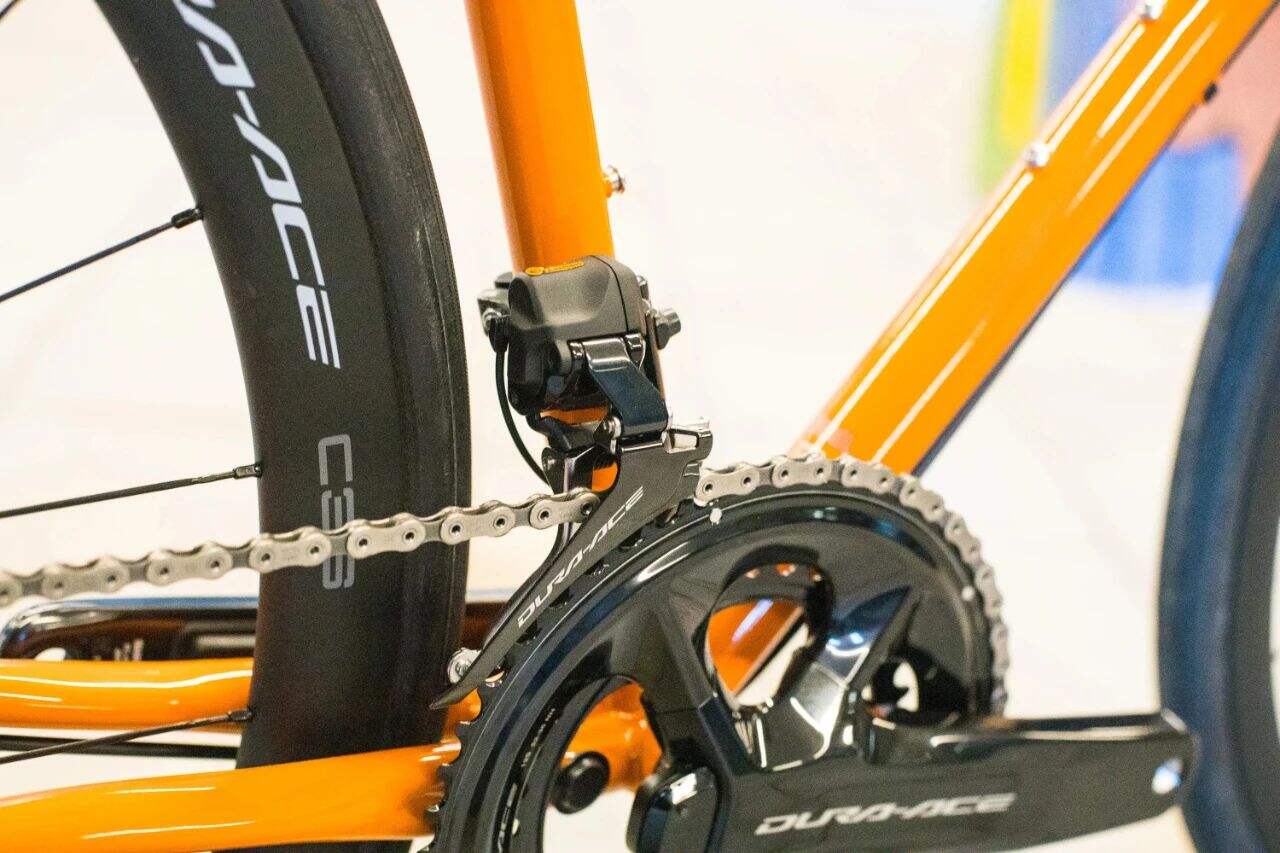
Shimano Dura-Ace Di2 RD-R9250 oldi borilayotgan chorlashi klassda eng yaxshisi deb hisoblanishi mumkin, va ko'pincha muassasi yollarining bir nechta guruhlarida rivojlantirilgan oldi borilayotgan almashtirishlari mavjud.
Yuqorida qayd etilgan xususiyatlarning va kamchiliklarning tarkibidan qat'iy narsa fursat bo'lsa ham, men yorug'lik pushkasi uchun 1X konfiguratsiyaga o'tmayman, chunki joriy old front derailleur juda yaxshi ishlaydi.
Hozirgi kunda yorug'lik pushkasi gruppa ajoyib old ayiralish performansini taklif qiladi. Elektron gruppa hozirgi kunda old ayiralishda altin standart hisoblanadi. Ko'p odamlar (men shu jumladan) Shimano ni bu sohalarda rivojlari sifatida hisoblaydi, lekin SRAM va Campagnolo shunchaki orqasidan kengaymoqda.
Ammo, hozirgi kunlarda ham mekhanik gruppa ajoyib old ayiralish performansini taklif qiladi.
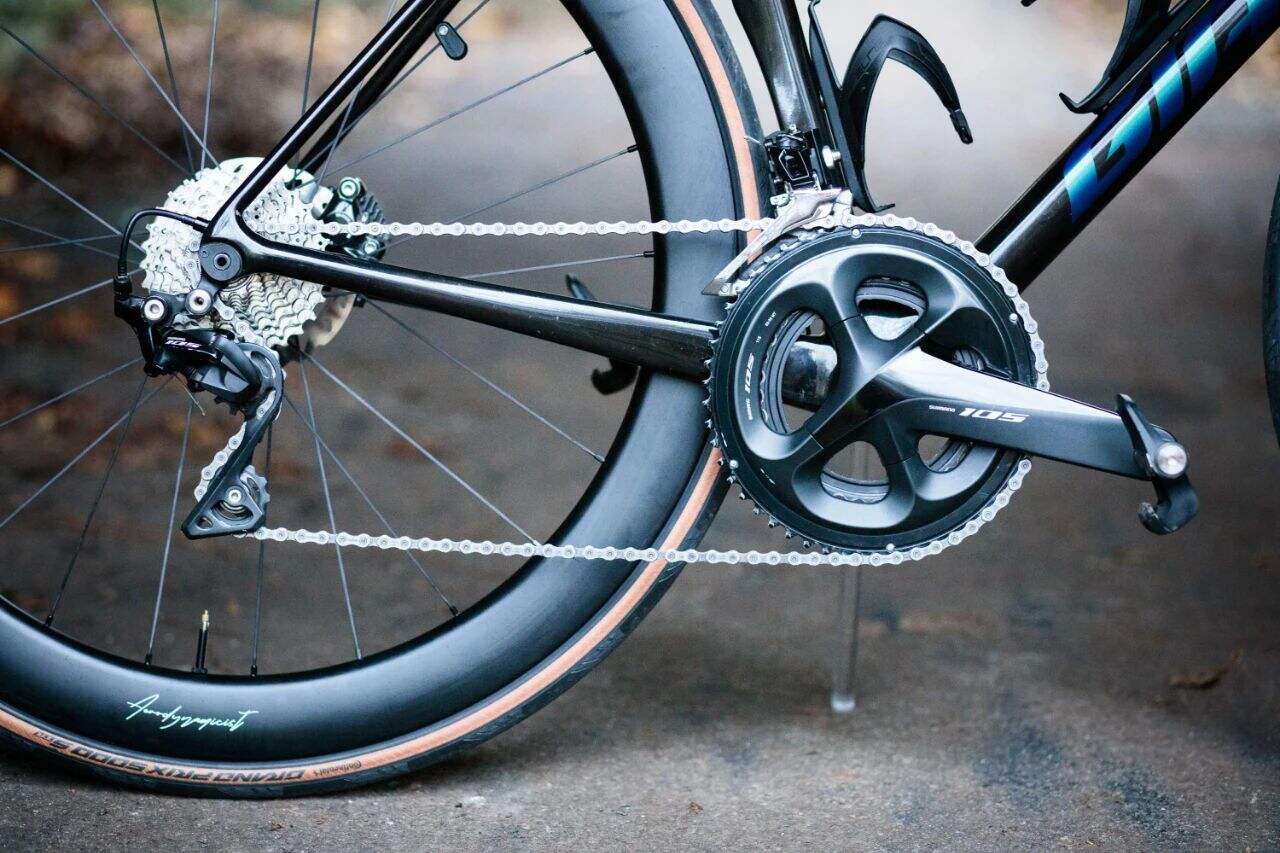
Shimano ning markaziy 105 R7000 gruppa ajoyib old ayiralishni arzon narxdagi to'plam bilan taqdim etadi.
Qonuniy tarzda, noto'g'ri ayiralish yoki yomon sozlash hali ham muammolar yaratishi mumkin, lekin old ayiralish umuman muammo emas deb his obid qilinadi.
Classified Powershift Hub o'yincha o'zgaruvchi hisoblanadi?
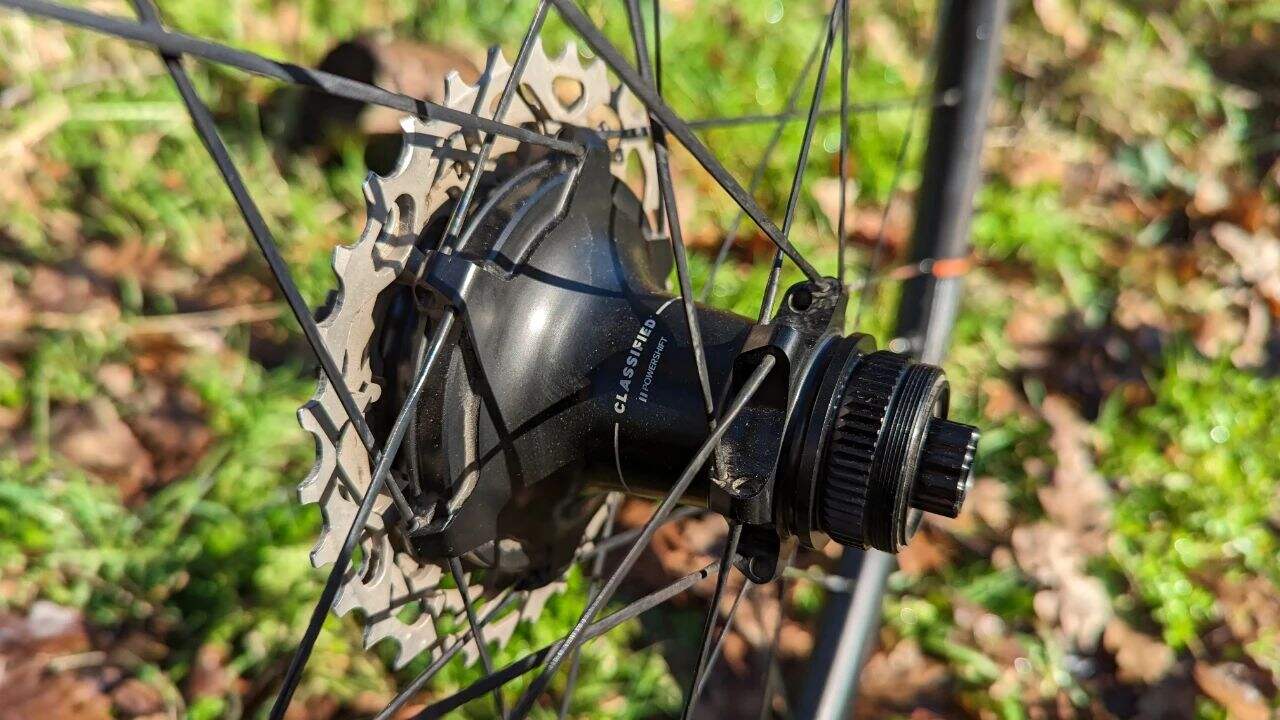
Classified Powershift moyini ma'lumotlar bazasi qiziqarli texnologiya hisoblanadi, hozirgi vaqtda juda yaxshi ishlay oladi, lekin bu to'rtga yetmaydi.
Classified Powershift moy mukofotli 2-suralik sayyorli mukofot tizimi orqali orqa moyda integrallashtirilgan. Bu tizim ko'p hollarda 'oldiga ajratish oʻrnini egallaydigan' deb taniladi, ammo men shu yerdan tez orada bo'lmaydiganini hisoblayman.
U haqiqatan ham yuqorida eslatilgan bitta sayyorli tizimlarning ko'plab kamchiliklariga yechim topishi mumkin — belki bir kun ikkala jahondagi eng yaxshisini olamiz.
Ammo ko'p odamlar uchun muammo buki juda qimmat. Masalan, Classified R50 va G30 Powershift diapazoni £2,300 (taxminan 20,000 RM) turadi, bu esa avvalroq taklif etilgan Trek Émonda ALR 5 butun velosipedidan faqat £25 arzaligi bilan farqlanadi.
Barcha ushbu pul uchun siz 2X tizimdan foydalanishga nisbatan nimaga ega bo'lasiz? Uzoq masofada eritildi effektivlik... va shunda barchasi?
Tabii, agar Classifiedning hub texnologiyasi keyinroq mashhur bo'lib turib, vaqt o'tish bilan narxi pasayishi mumkin.
Ikki qatli chainring hali ham eng yaxshi tanlov
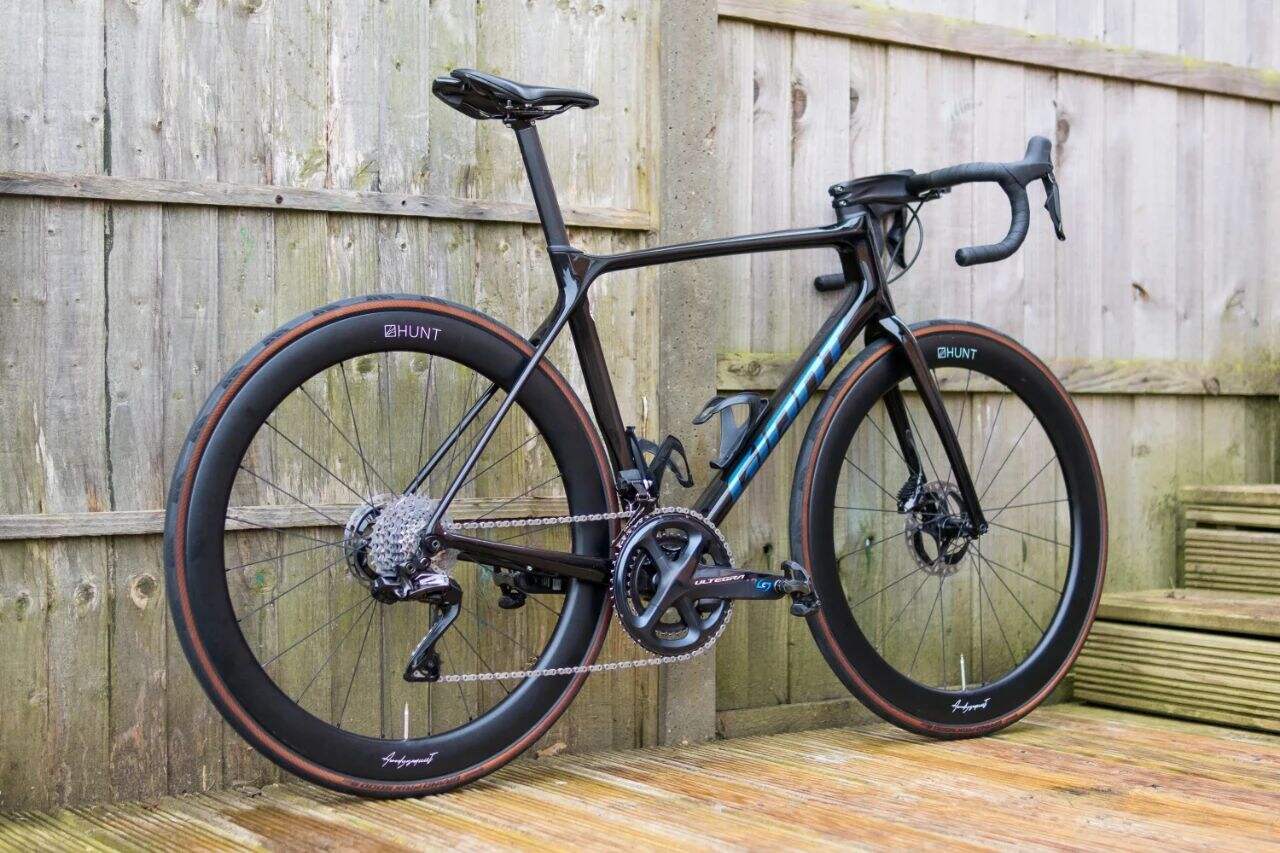
Umumiy yo'l bisikleti uchun 2x transmissiya tomonidan taklif etilgan ko'pfunksionallikni yengil emas yuqoriligacha yetkazish mumkin.
Menning barcha dağ bisikletlarim bitta chainring sistemalariga ega, lekin shu sistemani yo'l bisikletiga o'tkazish juda mantiqsiz deb hisoblayman. Ko'plab odamlar uchun 2X sistemasi hali ham eng yaxshi variant.
Muassar oldindagi derailleurlarning taklif etgan imkoniyatlari kuchli ekanligini o'rganib chiqqan holda, 1X sistemadan kelib chiroyli imkoniyatlar oson emas qiymat berish kerak.

